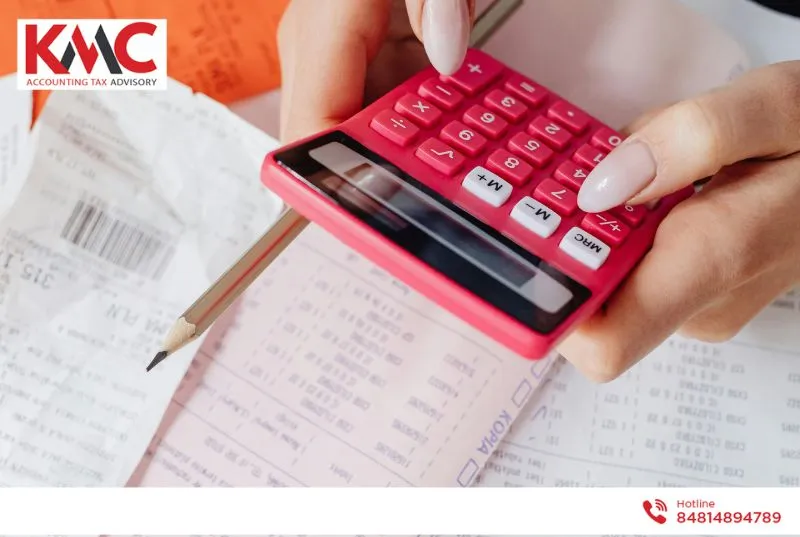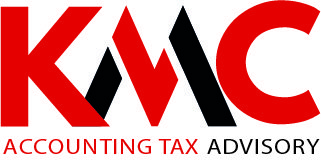As an accountant at a foreign-invested enterprise (FDI), are you feeling uncertain about how to deal with an issued e-invoice that contains incorrect information? In this article, KMC will guide you on how to handle invoices under Circular 78 while strictly complying with the provisions of Vietnam’s Tax Law, based on Circular 78/2021/TT-BTC and Decree 123/2020/NĐ-CP, ensuring accuracy for financial reports submitted to the parent company.
Principles for Handling Invoices under Circular 78 to Eliminate Errors

To understand the principles of handling erroneous invoices in compliance with the law, you first need to review Circular 78/2021/TT-BTC. This Circular provides guidance on the implementation of the Law on Tax Administration and Decree 123/2020/NĐ-CP, issued on September 17, 2021, and effective from July 1, 2022. It establishes the legal framework for addressing issues related to invoices, including remedies for errors, thereby helping enterprises ensure compliance with regulations.
Based on Circular 78 and the current regulations (prior to June 1, 2025), the following are the fundamental principles for handling erroneous invoices in a clear and practical manner:
Transparency with partners
If an invoice contains errors, you must inform and clearly agree with the customer (typically in writing, especially as required from 2025 under Decree 70).
Notification to the Tax Authority
All errors must be reported using Form 04/SS-HĐĐT submitted to the Tax Authority, except in certain special cases.
Record retention
You need to keep the written agreement, the notification submitted to the Tax Authority, and the amended invoice for future tax inspections.
Classification of Scenarios and Specific Methods for Handling Invoices under Circular 78
Case 1: The seller discovers errors before sending the invoice to the customer

Based on Clause 1, Article 19 of Decree 123/2020/NĐ-CP, updated by Decree 70/2025/NĐ-CP – invoices are no longer cancelled.
If you detect an error on an invoice that has already been issued with a code from the Tax Authority but has not yet been sent to the customer, you must issue a new replacement invoice, accompanied by an agreement document (if necessary).
Step-by-step process:
- Step 1: Verify and record the internal error (e.g., incorrect product name or quantity).
- Step 2: Prepare an agreement document with the customer (if the customer is an enterprise or organization), specifying the error. This could be an email or a digitally signed memorandum. Retention is essential.
- Step 3: Submit an error notification to the Tax Authority using Form 04/SS-HĐĐT (Appendix IA, Decree 123, updated by Decree 70). This can be submitted anytime before the VAT return deadline.
- Step 4: When issuing the replacement invoice, include the note: “Replacement for Invoice Form No.… Serial No.… Invoice No.… Date… Month… Year…”. Then digitally sign, submit to the Tax Authority for code issuance (if coded invoice), and send it to the customer.
Note: Always check the Tax Authority’s electronic portal for responses to ensure everything is correct. If the invoice has not been sent, you do not need to separately notify the customer.
Case 2: Errors discovered after the invoice has been sent to the customer

Based on Clause 2, Article 19 of Decree 123/2020/NĐ-CP, updated by Decree 70/2025/NĐ-CP. In this case, you may choose either adjustment or replacement, depending on the situation.
Incorrect customer name or address (other details are correct)
Method: Notification only – no need to issue a new invoice, saving time.
Steps:
- Notify the customer of the error (via email or e-invoice software).
- Submit an error notification to the Tax Authority using Form 04/SS-HĐĐT, explaining the reason (e.g., address correction from “District 1” to “District 3”).
- Forward the Tax Authority’s response to the customer for assurance.
Note: If the invoice is uncoded and has not yet been reported to the Tax Authority, no notification is required.
Incorrect tax code, amount, tax rate, tax amount, or product/service specifications/quality
- Method: You can choose one of two options – issue an adjusted invoice (if only numerical corrections are needed) or issue a replacement invoice (for major errors). From 2025, a written agreement with the customer is mandatory before proceeding.
Option 1 – Adjusted Invoice:
- Prepare a written agreement with the customer specifying the error (e.g., “incorrect amount from VND 100 million to VND 90 million”).
- Issue an adjusted invoice with the note: “Adjustment for Invoice Form No.… Serial No.… Invoice No.… Date… Month… Year…”. Use (+) for increases, (–) for decreases (e.g., decrease VND 10 million = “–10 million”).
- Digitally sign, submit to the Tax Authority for code issuance (if coded invoice), then send to the customer.
- Submit an error notification to the Tax Authority using Form 04/SS-HĐĐT and check their response.
Option 2 – Replacement Invoice:
- Prepare a written agreement with the customer as above.
- Issue a new replacement invoice with the note: “Replacement for Invoice Form No.… Serial No.… Invoice No.… Date… Month… Year…”.
- Digitally sign, submit to the Tax Authority for code issuance (if coded invoice), then send to the customer.
- Submit an error notification to the Tax Authority.
Note: If multiple invoices issued in the same month for the same customer contain errors, you may issue a single adjusted/replacement invoice with an attached schedule (Form 01/BK-ĐCTT). Always verify the tax code beforehand to avoid repetition.
Case 3: Errors detected and notified by the Tax Authority
Based on Clause 3, Article 19 of Decree 123/2020/NĐ-CP, updated by Decree 70/2025/NĐ-CP.
If the Tax Authority sends a notice (Form 01/TB-RSĐT via email), you must act promptly to avoid further audits.
Step-by-step process:
- Step 1: Receive and review the notice from the Tax Authority (they usually specify a response deadline of 2–5 days).
- Step 2: Prepare an agreement document with the customer (if necessary), then choose either adjustment or replacement.
- Step 3: Submit an error notification to the Tax Authority using Form 04/SS-HĐĐT.
- Step 4: Send the corrected invoice to the customer and await the Tax Authority’s response.
Note: If you fail to respond after two notifications, the Tax Authority may conduct a full audit of your invoice system.
Other Special Scenarios
- If you discover errors in old invoices (under Decree 51) after switching to the new system, issue a replacement invoice with an accompanying agreement document (Clause 6, Article 12 of Circular 78, updated by Decree 70).
- If the invoice symbol or form number is incorrect, issue an adjusted invoice (Point đ, Clause 1, Article 7 of Circular 78).
- If an adjusted or replacement invoice also contains errors, you must issue a new corresponding invoice (still adjusting the original or replacing the original) (Point c, Clause 1, Article 7 of Circular 78).
- In cases of commercial discount adjustments or goods returns, issue an adjusted invoice with the (+) or (–) sign, with an attached schedule if necessary. For goods returns, if your enterprise uses e-invoices, issue a return invoice (Point 4, Clause 13, Article 1 of Decree 70).
- For insurance refunds or premium reductions, the enterprise must issue an adjusted invoice based on the agreement document, clearly stating the refund amount (excluding VAT).
Although this article provides a fairly comprehensive process for handling invoices under Circular 78, FDI enterprises may encounter more complex situations that their internal accounting department cannot resolve. For example, there may be differences in interpreting and applying invoice handling regulations between the local office in Vietnam and the parent company overseas. In such cases, you need a professional advisor with in-depth knowledge of both Vietnamese law and international practices, such as KMC. Our team of seasoned experts will help you determine the most optimal solutions.

